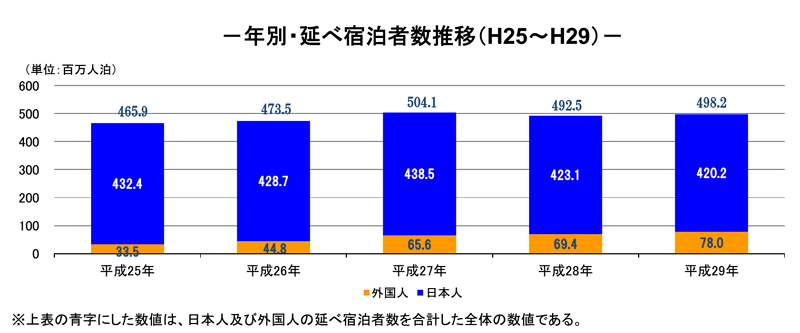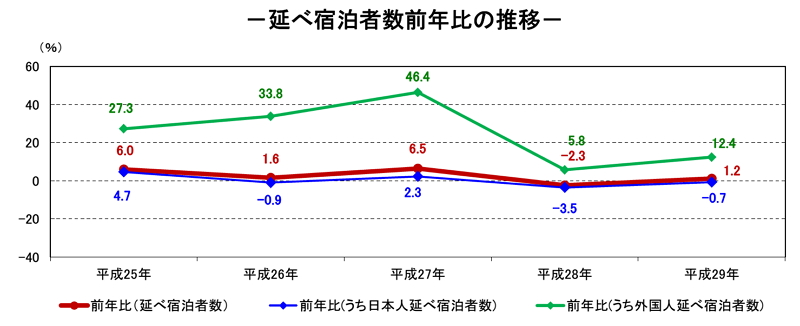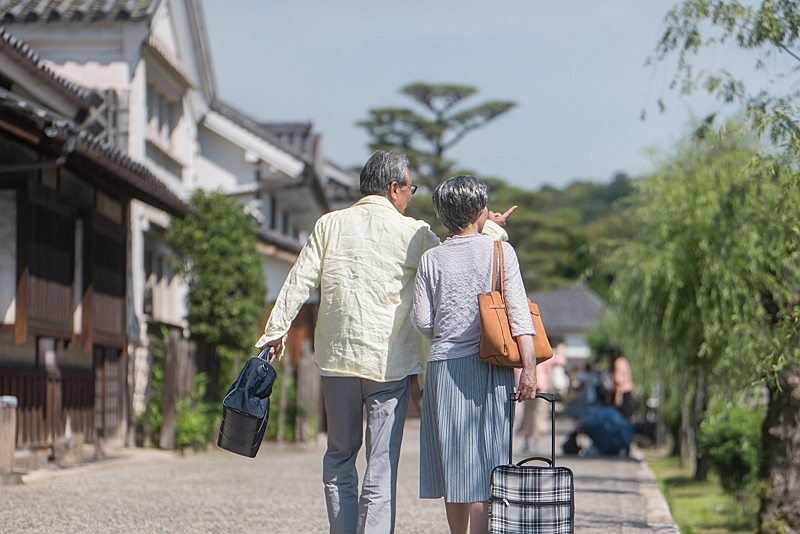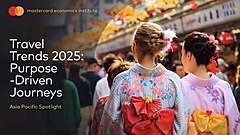
Japan Tourism Agency reported that guest nights in Japan totaled 498.2 million in 2017, 1.2% more than a year earlier. While Japanese guest nights were down 0.7% to 420 million, international guest nights were up 12.4% to record-high 78 million.
The graph below shows guest nights in the last five years:

The graph below shows year-on-year changes of guest nights in the last five years:

The nationwide occupancy rate in 2017 was 60.8% on average, and by type of accommodation, 79.4% for city hotels, 75.4% for budget hotel, 57.8% for resort hotel and 38.1% for ryokan, all of which were record-high since the survey started in 2010. By prefecture, Osaka had the highest average occupancy rate of 83.1% and also the highest rates in all types of accommodations: 90.6% for resort hotel, 89.3% for city hotel, 85.1% for budget hotel and 58.1% for ryokan.
In terms of guest nights by prefecture, the top was Tokyo with 58.1 million guest nights (+1.0%), followed by Hokkaido with 34.7 million guest nights (+3.4%) and Osaka with 32.7 million guest nights (+5.4%) through 2017. The highest growth rate was found in Kagoshima with a growth rate of 12%, followed by Ehime with 10.3% and Fukuoka with 9.6%. The biggest reduction rate was found in Mie with a reduction rate of 12%, followed by Tokushima with 11.8% and Shiga with 9.3%.
As far as international guest nights are concerned, guest nights in three major urban areas (Tokyo, Nagoya and Osaka) were 46.1 million (+10.2%), while those in other countryside regions were 31.9 million (+15.8%). The growth rate in countryside regions was higher than that in three major urban areas.
In December 2017 only, guest nights totaled 39.2 million (-0.7%), which consisted of 32.7 million Japanese guest nights (-3.6%) and 6.5 million international guest nights (+17.2%). The nationwide occupancy rate was 56.8%, and the highest rate was found in Osaka with 81.1%, followed by Tokyo with 77.4%.





